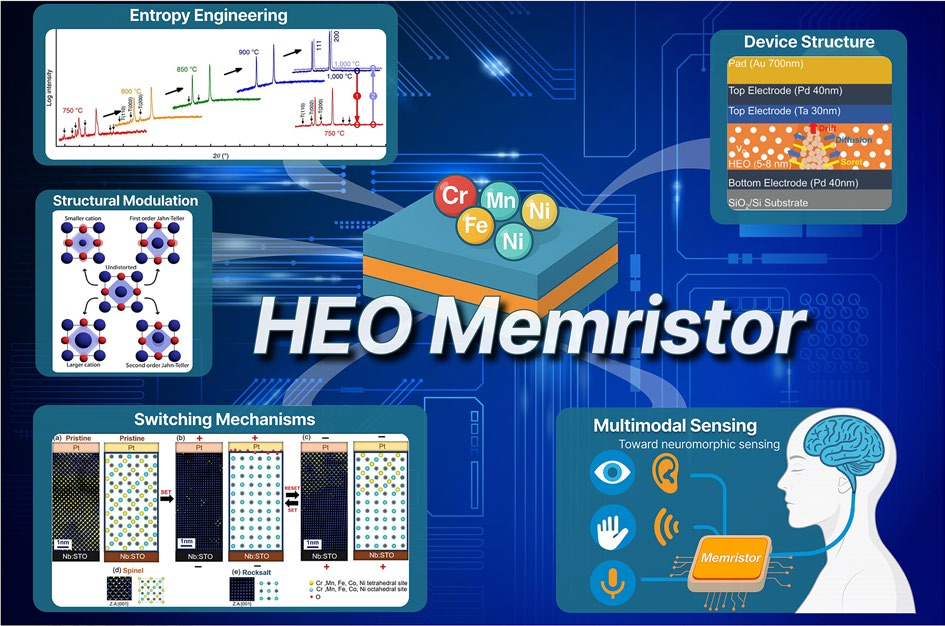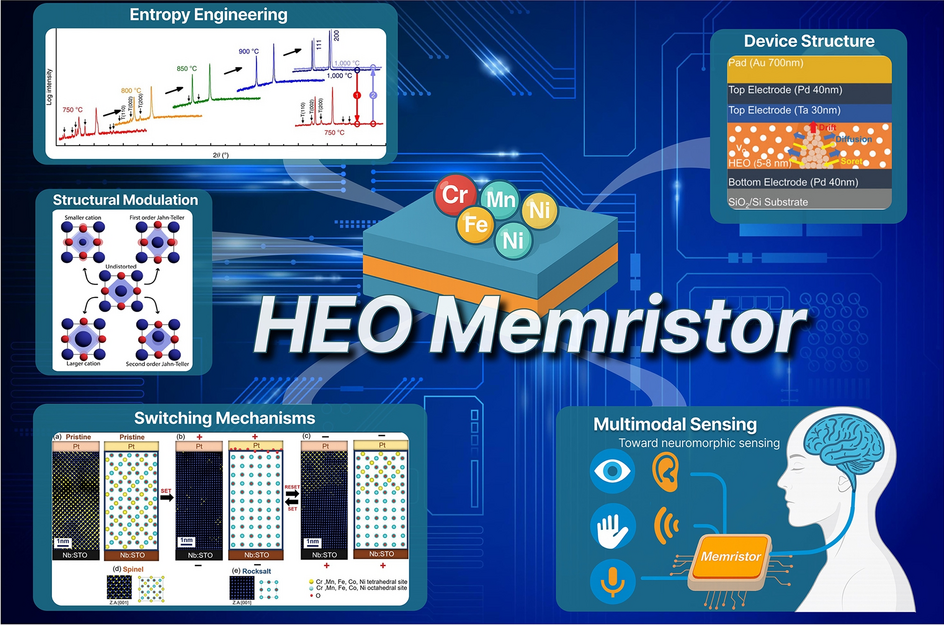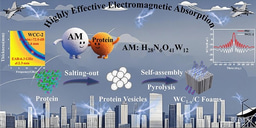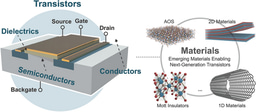High-Entropy Oxide Memristors for Neuromorphic Computing: From Material Engineering to Functional Integration
Published in Materials and Mechanical Engineering

A research team led by Professor Xin-Gui Tang from Guangdong University of Technology has published a comprehensive review in Nano-Micro Letters on recent advances in high-entropy oxide (HEO) memristors for neuromorphic computing. This work highlights how entropy engineering enables unique structural and electronic tunability, providing a promising route toward energy-efficient, adaptive, and scalable brain-inspired hardware systems.
Why High-Entropy Oxides Matter
- Entropy-Stabilized Structures: HEOs contain multiple cations in near-equimolar ratios, forming highly disordered yet stable lattices that resist phase segregation.
- Defect Modulation: Rich defect chemistry enables precise control of oxygen vacancies, facilitating low-power, forming-free resistive switching.
- Functional Diversity: Tunable band structure, ionic mobility, and electron transport create multifunctional platforms for memory, sensing, and learning.
Design Strategies for HEO Memristors
- Material Engineering: Diverse synthesis routes—such as solid-state reactions, sol–gel processes, plasma treatment, and Joule heating—allow atomic-level mixing and defect tailoring.
- Interface Optimization: Entropy-enhanced structural uniformity improves electrode contact and suppresses interfacial degradation.
- Device Miniaturization: Stable high-entropy matrices enable reliable operation at nanoscale dimensions, compatible with CMOS integration.
Mechanistic Insights
- Resistive Switching Mechanisms: The migration of oxygen vacancies and modulation of cation valence states govern analog conductance evolution.
- Neuromorphic Behavior: HEO memristors emulate synaptic functions including short-term plasticity, long-term potentiation/depression, and spike-timing-dependent learning.
- Thermal and Electrical Stability: The entropy-stabilized frameworks ensure endurance and reproducibility during continuous high-speed switching cycles.
Performance Highlights
- Energy Efficiency: Low-voltage, forming-free switching minimizes power consumption in large-scale arrays.
- Analog Tunability: Multilevel conductance states enable accurate synaptic weight updates essential for neural network operation.
- Durability: Robust phase stability ensures consistent performance over extended cycling and temperature ranges.
Future Outlook
HEO memristor research is transitioning from exploratory synthesis to system-level integration, with growing recognition of its potential to merge materials innovation and intelligent computation. Future directions include:
- Entropy-Gradient Design: Controlling local composition to balance switching uniformity and tunability.
- Defect–Interface Coupling: Engineering interfaces for deterministic switching and improved retention.
- 3D Neuromorphic Architectures: Integrating HEO-based devices into high-density, low-power neural systems.
By connecting atomic-scale entropy principles with device-level performance, this review provides a roadmap for entropy-engineered electronics, demonstrating how high-entropy oxide memristors could enable the next generation of adaptive, energy-efficient artificial intelligence hardware.
Follow the Topic
-
Nano-Micro Letters

Nano-Micro Letters is a peer-reviewed, international, interdisciplinary and open-access journal that focus on science, experiments, engineering, technologies and applications of nano- or microscale structure and system in physics, chemistry, biology, material science, and pharmacy.






Please sign in or register for FREE
If you are a registered user on Research Communities by Springer Nature, please sign in